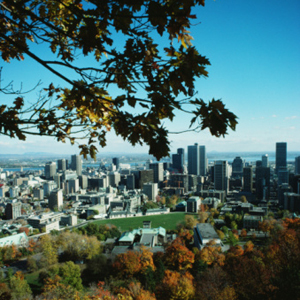 When the temperature shoots up, cities usually feel the heat the most. But some cities feel the heat more than others.
When the temperature shoots up, cities usually feel the heat the most. But some cities feel the heat more than others.
Scientists studying urban heat islands in 42 cities in the Northeastern U.S. have found that the greatest temperature differences between urban areas and the surrounding environment are in places you might not expect.
Cities located in forest environments have higher heat island effects than those in grasslands or deserts. The bigger the city, the greater the heat island effect. And the more densely-populated cities are worse off than the sprawling ones in this respect.
The results may seem counterintuitive. Isn’t sprawl supposed to be bad? And in one city – Las Vegas – the heat island effect was actually negative in one study, meaning its temperature was lower than the surrounding desert environment. That’s not because of all the water fountains at the Venetian or the Mirage casinos.
“People tend to have some trees, or parks, or lawns around the house or in the street and that’s why the temperature in Las Vegas is sometimes cooler than in deserts because there’s not much vegetation in the deserts,” said Ping Zhang, a research scientist at NASA’s Goddard Space Flight Center.
Zhang says the differences in heat effects come down to the amount of vegetation a city has. Densely populated areas tend to have less vegetation than cities that sprawl. That makes the more compact Providence, Rhode Island, have almost double the heat island effect of the more sprawing Buffalo, New York, despite their similarly-sized populations.
These differences have a big impact on urbanites. About half the world’s population lives in cities, an amount expected to increase to 80 percent by 2030. Hotter cities can exacerbate the effects of heat waves, which are increasing in frequency and intensity because of climate change.
Air conditioning is unlikely to make the circumstances better, said Cecíl de Munck of the National Center of Meteorological Research in France. Parisians still sweating over the 2003 heat wave, which killed more than 5,000 people, may turn to air conditioning as heat waves hit more frequently. But doing so would increase the city’s outside temperature by as much as 3.6 degrees Fahrenheit because of all the hot hair venting from AC units.
“We are faced with a vicious cycle since an increase in air temperature leads to an increase in demand,” de Munck said.
Best thing to do? The scientists agree that the answer is planting more vegetation.
Alison Hawkes is a freelance journalist in San Francisco and co-founder of Way Out West News.
